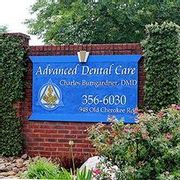Dentist Explains the Types of Gum Disease & Signs You Have It

One of the biggest threats to your oral health is gum disease. If it isn’t treated right away, it can cause permanent damage to your gums, teeth, and bone. The first step in prevention is identification. Dr. Charles Bumgardner, DMD, in Lexington, SC, explains different types of gum disease and the signs you may have them.
Gingivitis
An extremely common problem, gingivitis is often ignored because it seems harmless. However, this is the first stage of gum disease and the last chance to treat the issue on your own without professional help. Symptoms of gingivitis include tenderness, redness, swelling, and bleeding gums. If you experience these symptoms, you can generally ease them with careful brushing and regular flossing. Your dentist may also provide a more thorough cleaning to reduce these effects.
Periodontitis
 As tartar builds along your gumline, it irritates your gums, causing them to pull away from your teeth. This, in turn, creates pockets that harbor more bacteria and lead to further irritation. Once your gums begin to recede, you need the help of a dentist for treatment. The signs of periodontitis include receding gums, deep pockets between teeth and gums, persistent bad breath, and shifting of teeth.
As tartar builds along your gumline, it irritates your gums, causing them to pull away from your teeth. This, in turn, creates pockets that harbor more bacteria and lead to further irritation. Once your gums begin to recede, you need the help of a dentist for treatment. The signs of periodontitis include receding gums, deep pockets between teeth and gums, persistent bad breath, and shifting of teeth.
Advanced Periodontitis
As gum disease moves deeper, it attacks the sockets of bone and the ligaments holding your teeth in place. In addition to the signs of periodontitis, the worsening infection may produce pus between the teeth and gums, more dramatic shifting of the teeth, and, eventually, tooth loss.
If you suffer from any stage of gum disease, Dr. Charles Bumgardner, DMD, can help. Even tooth loss isn't untreatable, thanks to dental implants. Call the office today at (803) 356-6030 to schedule an exam, or contact them online.
About the Business
Have a question? Ask the experts!
Send your question

